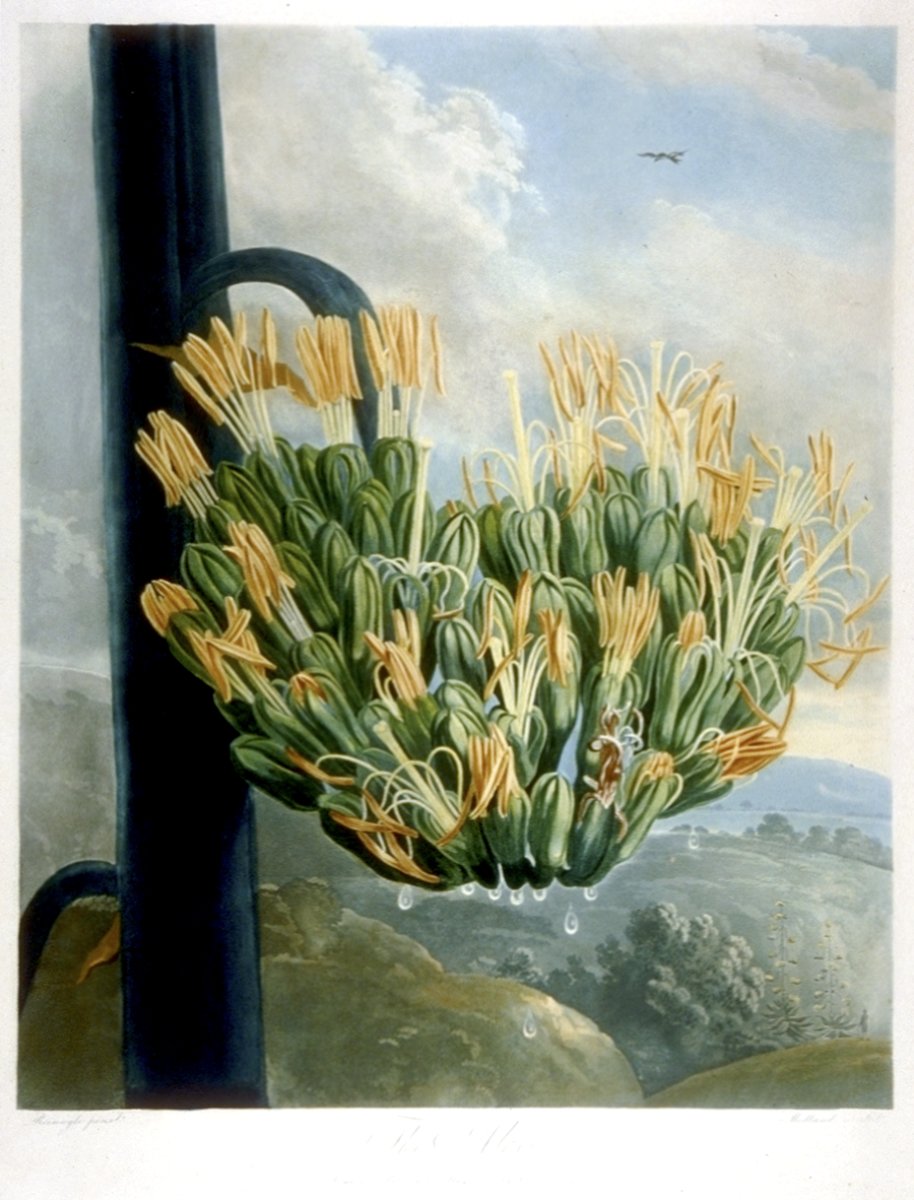The Aloe
Philip Reinagle (1749 - 1833)
Thomas Medland
Colour aquatint and engraving
1 May 1798
-
About the work
- Location
-
Country: UK
City: London
Place: Government Hospitality, Lancaster House
This illustration is from botanical author Dr Robert John Thornton’s great work: ‘New Illustration of the Sexual System of Linnaeus’ (published 1799-1807). Thornton spared no expense in the production of the lavish publication, better known by its 1804 title ‘The Temple of Flora’. Although based on a dissertation about the sexes of plants by Swedish botanist, physician and zoologist Carl Linnaeus (1707-1778), Thornton added his own notes before publishing the work in parts.
‘The Temple of Flora’ was the most sumptuous botanical publication ever produced. Thornton, who had trained as a dentist, practised botanical painting himself but only included one of his own designs, ‘Roses’. Instead he commissioned several artists, including Philip Reinagle, Peter Henderson and Abraham Pether, to produce illustrations set against landscapes or allegoric backgrounds. In some instances the backgrounds do not relate to the flowers. For example, Reinagle’s Jamaican ‘Night-Blooming Cereus’ is set against a moonlit view of an English church. The high production costs of the publication led to financial disaster for Thornton and, in spite of the renown of the book, he died in poverty.
-
About the artist
Philip Reinagle was born in Edinburgh, the son of a Hungarian musician. He began his career as a portrait painter, eventually specialising in animal, sporting and landscape paintings. He studied at the Royal Academy Schools in 1769 and later worked as an assistant to Scottish portraitist Allan Ramsay, in whose studio he worked on numerous versions of portraits of King George III and Queen Charlotte. Reinagle exhibited his paintings in London at the Royal Academy and the British Institution during the late 18th to mid 19th centuries. His depictions of animals and landscapes were influenced by the Dutch painting. Two of his eleven children, Fanny and Charlotte, later went on to become painters of portraits, miniatures and landscapes.
Engraver and draughtsman Thomas Medland lived in Westminster. He is included in a drawing by A. E. Chalon titled ‘Students at the British Institution’ (1807), suggesting he studied there, although he may have been a teacher. He engraved illustrations for ‘Robinson Crusoe’, after drawings by Thomas Stothard and also became known for his topographical aquatints. Medland was also a watercolour painter and exhibited his watercolours at the Royal Academy. The original watercolour for the ‘West Front of the East India Company College’ was exhibited at the Academy in 1808. Medland died at his home near Haileybury College in Hertford at about the age of 68. Nothing is known of his wife, but his will divided his estate between three children.
-
Explore
- Places
- Subjects
- Materials & Techniques
-
Details
- Title
- The Aloe
- Date
- 1 May 1798
- Medium
- Colour aquatint and engraving
- Acquisition
- Purchased from Frank T Sabin, December 1958
- GAC number
- 4773